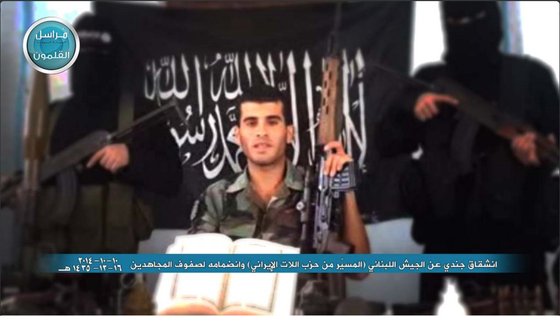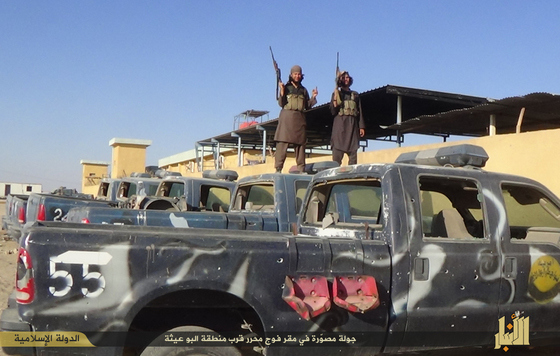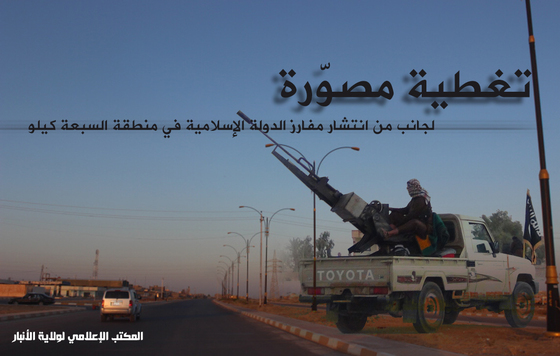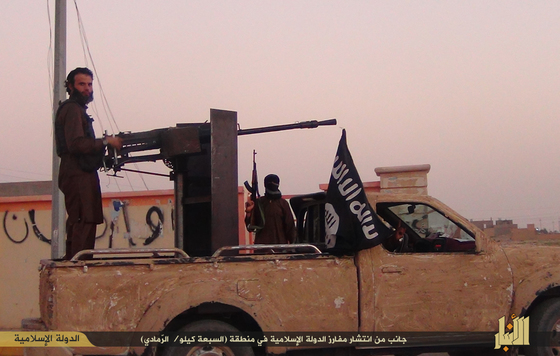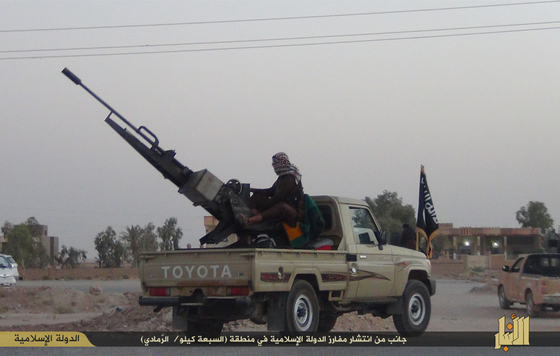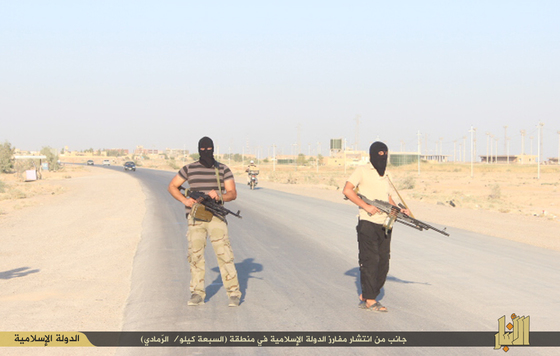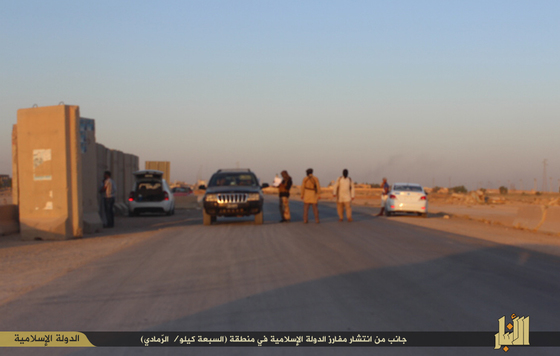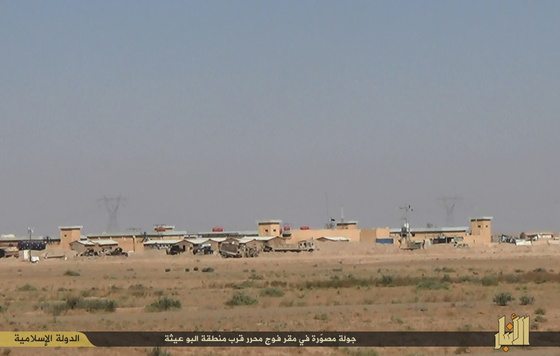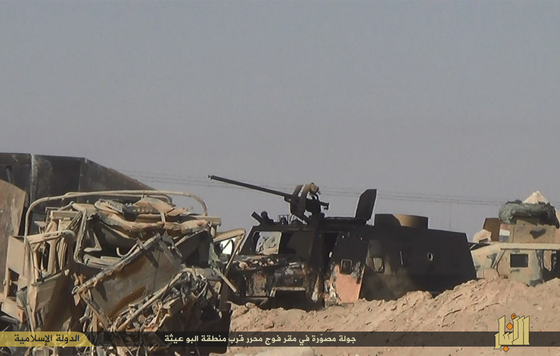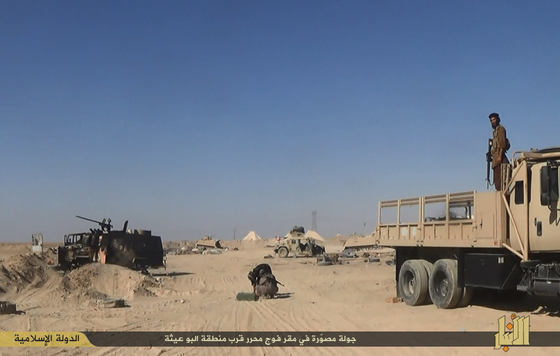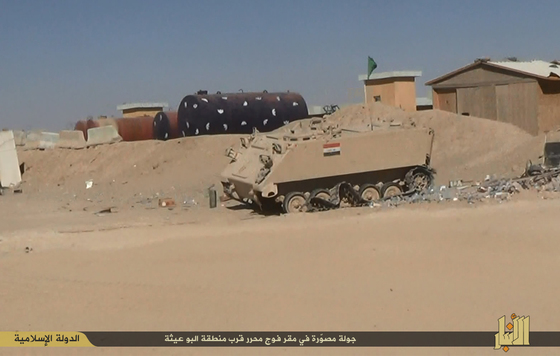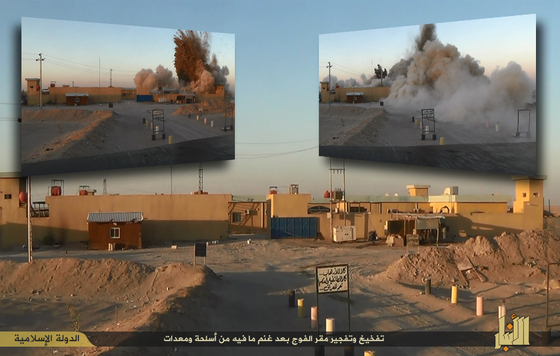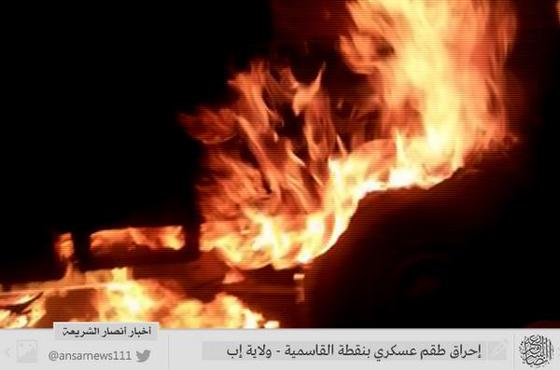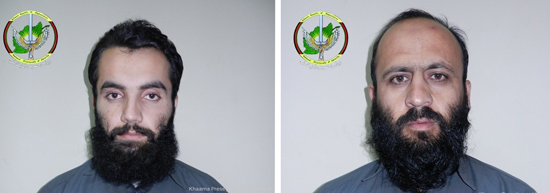![Screen Shot 2014-10-12 at 8.22.54 AM.png]()
|
| AQIS spokesman Usama Mahmood posted this image of Sheikh Imran Ali Siddiqi on his official Twitter feed on Oct. 11. Mahmood confirmed that Imran had been killed in a US air strike. |
Usama Mahmood, the spokesman for al Qaeda in the Indian Subcontinent (AQIS), announced on Oct. 11 that a veteran jihadist named Sheikh Imran Ali Siddiqi (a.k.a. Haji Shaikh Waliullah) had been killed in a US drone strike. On his official Twitter feed, Mahmood explained that Imran had been waging jihad since 1990 and that he was a member of the AQIS shura council at the time of his death.
Imran's career provides insight into the makeup of al Qaeda's newest branch.
Ayman al Zawahiri and other al Qaeda officials announced the creation of AQIS in early September, explaining that it was two years in the making. Mahmood said in his own statement at the time that AQIS was formed by gathering together "several jihadi groups that have a long history in jihad and fighting."
While al Qaeda did not specify which groups agreed to join the umbrella organization, its messages provided some clues. Mahmood listed a number of "martyrs" who had paved the way for AQIS' creation. The fallen jihadists served in several al Qaeda-linked groups, and the implication of Mahmood's praise was that these organizations, or at least elements from them, had been folded into AQIS.
Some of the jihadists mentioned by Mahmood worked for Harkat-ul-Mujahideen (HUM), which has been closely allied with al Qaeda since well before 9/11 and maintains active training camps inside Afghanistan to this day.
Imran's jihadist career began in HUM. After the Sept. 11, 2001 terrorist attacks, Imran formed an offshoot of the group named Harkat-ul-Mujahideen al-Almi (HUMA), which has been tied to several attacks against Western interests in Pakistan.
Imran, Muhammad Hanif (Imran's deputy), and some of their subordinates were also suspected of plotting to kill Pakistani president Pervez Musharraf on April 26, 2002. According to contemporaneous Pakistani press reports, they planned to detonate a remote-controlled explosive device packed inside a car near Musharraf's motorcade. The device failed to ignite and Musharraf was spared.
Imran and Hanif were arrested in July 2002 and later sentenced to ten years in prison for their terror roles. In addition to the plot to kill Musharraf, they were suspected of orchestrating an attack on French engineers and the US Consulate in Karachi. Some of the charges were later dropped.
After Imran was freed from prison, he was quickly integrated into al Qaeda's ranks, becoming one of AQIS' top officials.
HUMA and al Qaeda
Imran's HUMA has longstanding ties to al Qaeda.
HUMA's parent organization, Harakat-ul-Mujahideen (HUM), is led by Fazle-ur-Rahman Khalil. Osama bin Laden counted Khalil among his most trusted allies. Khalil was one of the several jihadist leaders who signed bin Laden's infamous 1998 fatwa declaring war against the US. In late September, the US Treasury Department added Khalil to the government's list of specially designated global terrorists. Treasury specifically referenced Khalil's personal relationship with bin Laden and support for al Qaeda's operations. [See LWJ report, US adds Harakat-ul Mujahideen's emir to terrorism list.]
Published accounts differ as to whether Imran's HUMA was really a new entity, or simply a front for HUM in the post-9/11 world. Regardless, HUMA's leaders had their own ties to al Qaeda.
In 2004, Pakistani officials arrested a HUMA member named Kamran Atif after a shootout between the jihadists and the police. Atif was identified as one of the principal conspirators responsible for the attempted assassination of President Musharraf in April 2002.
A memo prepared by Joint Task Force-Guantanamo (JTF-GTMO) in May 2004, less than two weeks after Atif's arrest, contains intelligence collected from Atif by Pakistani authorities. The JTF-GTMO memo was authored as a threat assessment for Mohammad Ilyas, a Pakistani then held in Cuba who was suspected of being "one of the recruiters and leaders at the Mansehra Jihad Training Camp located at Mansehra, Pakistan." The "training camp is controlled by the Harakat-ul-Mujahidin al-Alami (HUMA) organization," JTF-GTMO found.
Seeking to place Ilyas' jihadist role into context, JTF-GTMO's analysts noted:
Kamran Atif, a terrorist who was recently arrested by the Pakistani Crime Investigation Department (CID) Police revealed that HUMA has links with Al-Qaeda and that HUMA and AQ are "in complete contact with each other."
JTF-GTMO went on to describe HUMA as a "Tier 1 terrorist target" for the US government. Organizations placed in this category are "terrorist groups, especially those with state support, that have demonstrated the intention and the capability to attack US persons or interests."
Under Imran's leadership, HUMA had proven its intent and capability to strike US interests on June 14, 2002, nearly two years before the JTF-GTMO memo was written. On that day, a car bomb killed twelve and wounded dozens more at the US Consulate in Karachi. There are conflicting accounts as to whether or not a suicide bomber was responsible. But Pakistani investigators told the press that the car blown up outside of the American diplomatic facility was the same one Atif and his HUMA co-conspirators had used in their failed attempt to kill Musharraf.
American and Pakistani officials were initially confused as to the identity of terrorist organization responsible for the US Consulate bombing. A previous unknown group calling itself al Qanoon (or "the law") claimed responsibility the attack in a handwritten message faxed to leading news organizations. "America and its allies and its slave Pakistani rulers should prepare for more attacks," the statement read, according to press accounts at the time. "This bomb attack is just a beginning of al Qanoon's jihad operation in Pakistan."
Officials suspected that the name "al Qanoon" was simply a cover employed by al Qaeda and its allies. For example, on June 15, 2002, the morning after the attack, CNN ran a segment titled, "Is Al Qanoon Connected to al Qaeda?" The "highlight" published in the transcript of the segment reads: "In Washington, the State Department suspects Osama bin Laden's al Qaeda network had a hand in yesterday's bombing attack in Pakistan, for which a previously unknown group named Al Qanoon claimed responsibility." The State Department's suspicion did not fade away. In its annual report on terrorism for 2002, State noted that al Qaeda or al Qanoon "is possibly responsible."
Foggy Bottom suspected that al Qaeda was behind another attack that involved HUMA operatives just weeks earlier.
On May 8, 2002, a car bomb struck a bus carrying French naval engineers in front of the Sheraton Hotel in Karachi. Ten French workers and 2 Pakistanis were killed, while another 19 (11 French nationals and 8 Pakistanis) were wounded. In its year-end report on terrorism for 2002, the State Department found that al Qaeda "is probably responsible." According to some accounts, the Sheraton attack was the first suicide attack utilizing a vehicle in post-9/11 Pakistan.
French investigators later posited that the May 2002 attack was actually orchestrated by Pakistani intelligence officials. The theory is based on the idea that French officials had been paying bribes and kickbacks to their Pakistani counterparts as part of a submarine deal. When the French discontinued the payments, the theory goes, Pakistani officials decided to exact retribution in the form of a car bombing.
A simpler explanation seems more likely. We cannot rule out the possibility that some current or former Pakistani officials assisted HUMA in its attacks. However, such support is consistent with deep seeded opposition to the American-led "war on terror," which was new at the time. Significant parts of the Pakistani military and intelligence establishment continued to sponsor the jihadists even after Musharraf decided to provide some support to the US-led war effort. And corruption has not been identified as a proximate cause of HUMA's attack on the US Consulate, which occurred just weeks after the French workers were killed.
Others see the attacks on Western interests as part of al Qaeda's post-9/11 scheming. In Pakistan: Terrorism Ground Zero, Rohan Gunaratna and Khuram Iqbal write that "HUMA is part of Al Qaeda's larger strategy to establish like-minded groups in Pakistan in order to force the Pakistani government to withdraw its support for the war on terror."
The authors point to strong connections between al Qaeda and HUMA. HUMA's "top leadership" was reportedly "trained at Al Qaeda camps in Afghanistan," they write. HUMA's financier was also connected to al Qaeda at the highest levels. The HUMA paymaster, a jihadist named Saud Memon, was identified as al Qaeda's top financier in Pakistan prior to his death in 2007. Memon is most notorious for his role in the killing of Wall Street Journal reporter Daniel Pearl. Sept. 11 mastermind Khalid Sheikh Mohammed has confessed to killing Pearl in Memon's home.
Al Qaeda's hidden hand
Al Qaeda often hides its influence over other jihadist organizations. For instance, al Qaeda masked the extent of its relationships with groups such as Shabaab in Somalia and the Al Nusrah Front in Syria, both of which eventually announced their allegiance to al Qaeda's senior leadership. Indeed, at first, al Qaeda instructed both groups not to advertise their connections.
Imran's HUMA, while not as big as either Shabaab or Al Nusrah, appears to have been similarly situated. HUMA's attacks against Western interests prefigured the launch of AQIS in important ways.
Early press reports portrayed the new al Qaeda branch as being focused primarily on India. But Mahmood, the AQIS spokesman, has bristled at these reports in his tweets, saying that while al Qaeda does seek to "liberate" India's Muslims it is also intent on fighting the Pakistan military. Mahmood portrayed the Pakistani armed forces as being "puppets" of America.
It is not surprising, therefore, to learn that Imran agreed to officially join al Qaeda's new venture. AQIS' goals are the same as those pursued by Imran and his men more than a decade ago. AQIS' first two claimed attacks were intended to undermine Pakistani assistance for the US in the fight against al Qaeda and like-minded jihadist groups.
And there is another operational similarity between Imran's HUMA and AQIS. Both have relied on current or former Pakistani servicemen to carry out their plots. HUMA's plan to kill President Musharraf in April 2002 allegedly involved a jihadist who had served in Pakistan's Rangers, an elite paramilitary force. AQIS has claimed that its attempt to hijack two Pakistani ships in September involved insiders who served in the Pakistani Navy.
While Imran has now perished in a drone strike, some of his top subordinates in HUMA reportedly carry on. It is likely that at least some of them are now part of AQIS as well.
